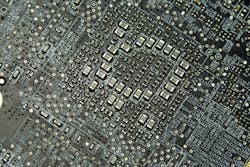A physics magic trick: take two sheets of carbon and twist
BARCELONA, Spain - In the universe of office supplies, pencil lead — a mixture of graphite and clay, which does not include any lead — appears unexceptional beyond its ability to draw dark lines. But 15 years ago, scientists discovered that a single sheet of graphite — a one-atom-thick layer of carbon atoms laid out in a honeycomb pattern — is a wonder. This ultrathin carbon, called graphene, is flexible and lighter than paper yet 200 times stronger than steel. It is also a good conductor of heat and electrical current, writes Kenneth Chang for the New York Times.
Continue reading original articleThe Intelligent Aerospace take:
October 31, 2019-Xiaobo Lu, first author of the study, which was published in Nature, said, "To our surprise, we observed that the system seemed to be competing between many novel states. By tuning the carrier density within the lowest two flat moiré bands, the system showed correlated states and superconductivity alternately, together with exotic magnetism and band topology. We also noted that these states were very sensitive to the quality of the device, i.e. accuracy and homogeneity of the twist angle between two sheets of graphene layers.”
By getting graphene layers to exhibit different types of behaviors, scientists can experiment with this material that can be both an insulator and conductor by twisting it slightly and can possibly lead to significant breakthroughs in technology.
Related: German Aerospace Center developed de-icing technology using carbon fiber
Related: Air Force invests $4.8M in FIU origami antenna technology for aircraft, UAS, satellites
Jamie Whitney, Associate Editor
Intelligent Aerospace
